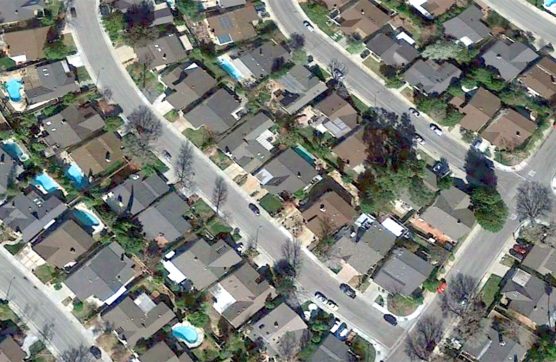
California’s median home price reached a new high in May, while home sales retreated both on a monthly and annual basis, wiping out most of the gains posted for the year, the California Association of Realtors said Tuesday.
The Southern California Region continued to lag the state. Overall sales in the region declined by 5.8 percent compared to a year ago, and sales in five of the six counties dropped on a year-over-year basis. Sales in Riverside County declined the most, followed by Orange County, and San Diego. Only San Bernardino County recorded an annual sales gain.
Statewide, closed escrow sales of existing, single-family detached homes totaled a seasonally adjusted annualized rate of 409,270 units in May, according to information collected by C.A.R. from more than 90 local Realtor associations and MLSs statewide.
The statewide annualized sales figure represents what would be the total number of homes sold during 2018 if sales maintained the May pace throughout the year. It is adjusted to account for seasonal factors that typically influence home sales.

May’s sales figure was down 1.8 percent from the revised 416,750 level in April and down 4.6 percent compared with home sales in May 2017 of 428,870.
May marked the first year-over-year sales decline in four months and the lowest sales level in more than a year.

“The softening in May home sales was due in part to the spike in interest rates in mid-April, when the 30-year fixed mortgage rate jumped 20 basis points in just one week to reach the highest level since 2014,” said C.A.R. president Steve White.
“Homebuyers may have postponed escrow closings to wait out the effects of the rate surge,” he said. “Additionally, the specter of rate increases earlier in the year may have pulled sales forward into the first quarter, which resulted in the subpar performance in the last couple of months. Looking ahead, higher mortgage rates and elevated home prices will heighten affordability constraints that will likely temper the housing market in the coming months.”
For the first time in 11 years, the statewide median home price surpassed its previous peak price of $594,530, which was recorded more than 10 years ago during the last housing boom.
The May statewide median price was $600,860, up 2.8 percent from a revised $584,460 in April and up 9.2 percent from a revised $550,230 in May 2017. The year-over-year price growth pace was the highest rate of growth since May 2014.
The statewide median price per square foot rose to $286 in May, the highest figure since November 2007, and marks “real” growth in home values rather than a shift in the market toward sales of larger or higher-end homes.
However, with the Bay Area outperforming the rest of the state, there is undoubtedly some pressure on the median price as the Bay Area made up a larger share of home sales.
“As we predicted last month, California’s statewide median home price broke the previous pre-recession peak set in May 2007 and hit another high as tight supply conditions continued to pour fuel on the price appreciation fire,” said C.A.R. Senior Vice President and Chief Economist Leslie Appleton-Young.
“With inventory starting to show signs of improvement, however, home price appreciation could decelerate in the second half of the year, especially since further rate increases are expected to hamper homebuyers’ affordability and limit how much they are willing to pay for their new home,” Young said.
Other key points from C.A.R.’s May 2018 resale housing report include:
On a regionwide, non-seasonally adjusted basis, only the San Francisco Bay Region recorded both solid month-to-month and year-over-year sales gains. Sales in the Bay Area rose 17.3 percent monthly and 2.1 percent annually.
Sales in the Inland Empire increased 7.6 percent from April and was down 5.0 percent from a year ago. The Los Angeles metro region experienced a 12.6 percent monthly sales jump but was down 5.6 percent annually.
The Bay Area Region, which has recorded annual sales increases for the past four months, continued to lead the state in home sales. Five of nine Bay Area counties posted year-over-year sales gains – with San Francisco increasing by double-digits – while Napa, Sonoma, Santa Clara, and Solano counties experienced annual sales declines.
The Central Valley Region maintained its momentum for the fifth consecutive month as regionwide sales experienced a slight 0.9 percent improvement and nine of 12 counties in the region performed better than the previous year. Three counties – including Glenn, Kern, and San Benito – posted double-digit increases, but their gains were mostly offset by the losses of San Joaquin, Placer, and Stanislaus.
The bottom end of the market continued to bear the brunt of the housing shortage as the availability of homes priced under $200,000 declined by 28.7 percent on an annual basis, and those priced between $200,000 and $299,999 dropped 13.1 percent.
On the other hand, inventory of properties priced $1 million and above increased by more than 18 percent. In general, supply constraints continue to limit sales in market segments priced below $500,000, but higher-priced properties continue to show modest to strong growth in sales in the recent month.
Home prices in the Bay Area remained robust in May, with the region’s median price spiking 16.4 percent from $935,000 in May 2017 to $1,088,000. In fact, the median price for the region remained above the $1 million benchmark for the second straight month and set a new record high.
Five of the nine counties in the region had a median price above $1 million in May 2018, with Alameda becoming the latest member to join the million-dollar club ($1,025,000).
Other million-dollar club members include San Francisco ($1,620,000), San Mateo ($1,600,000), Marin ($1,415,000) and Santa Clara ($1,400,000). Home prices increased in all nine counties on a year-over-year basis, and prices in three counties climbed by more than 10 percent.
Home prices in Southern California were more tepid by comparison but still showed a steady upward trend. Prices in San Bernardino and Los Angeles increased the most with near double-digit growth rates, while prices throughout the rest of the region grew at a more modest rate ranging between 4.6 percent and 5.8 percent.

An aerial view of Pardee Homes’ Fair Oaks and Aliento developments in Canyon Country, June 2018. | Photo: Stephen K. Peeples.
The number of statewide active listings improved for the second consecutive month, increasing 8.3 percent from the previous year. The year-over-year increase was the largest since January 2015, when active listings jumped 11.0 percent.
Perhaps more homeowners are listing their homes for sale in an effort to cash out on recent home price surges. The increase in active listings was also partly due to the sales decline, which led to a boost in inventory.
As sales declined from a year ago, the unsold inventory index, which is a ratio of inventory over sales, increased on a year-over-year basis as well. The statewide unsold inventory index edged up to 3.0 months in May from 2.9 months in May 2017. The index measures the number of months it would take to sell the supply of homes on the market at the current sales rate.
The median number of days it took to sell a California single-family home remained low at 15 days in May compared with 14 days in May 2017.
C.A.R.’s statewide sales price-to-list price ratio* was 100 percent in May, unchanged from May 2017.
The average statewide price per square foot** for an existing, single-family home statewide was $286 in May, up from $268 in May 2017.
Mortgage rates have been on the rise since breaking the 4.0 percent barrier in January. The 30-year, fixed-mortgage interest rates averaged 4.59 percent in May, up from 4.47 percent in April and from 4.01 percent in May 2017, according to Freddie Mac.
The five-year, adjustable mortgage interest rate also perked higher in May to an average of 3.79 percent from 3.66 percent in April and from 3.12 percent in May 2017.
Related Graphics (click links to open):
Calif. historical existing home sales
Calif. historical median home price
Sales to active listings by region
Historical price per square foot
Note: The County MLS median price and sales data in the tables are generated from a survey of more than 90 associations of Realtors throughout the state and represent statistics of existing single-family detached homes only. County sales data are not adjusted to account for seasonal factors that can influence home sales. Movements in sales prices should not be interpreted as changes in the cost of a standard home. The median price is where half sold for more and half sold for less; medians are more typical than average prices, which are skewed by a relatively small share of transactions at either the lower-end or the upper-end. Median prices can be influenced by changes in cost, as well as changes in the characteristics and the size of homes sold. The change in median prices should not be construed as actual price changes in specific homes.
* Sales-to-list price ratio is an indicator that reflects the negotiation power of home buyers and home sellers under current market conditions. The ratio is calculated by dividing the final sales price of a property by its last list price and is expressed as a percentage. A sales-to-list ratio with 100 percent or above suggests that the property sold for more than the list price, and a ratio below 100 percent indicates that the price sold below the asking price.
** Price per square foot is a measure commonly used by real estate agents and brokers to determine how much a square foot of space a buyer will pay for a property. It is calculated as the sale price of the home divided by the number of finished square feet. C.A.R. currently tracks price-per-square foot statistics for 50 counties.
Like this:
Like Loading...
Related





 Tweet This
Tweet This Facebook
Facebook Digg This
Digg This Bookmark
Bookmark Stumble
Stumble RSS
RSS































REAL NAMES ONLY: All posters must use their real individual or business name. This applies equally to Twitter account holders who use a nickname.
2 Comments
Great intel and well put together. The housing market is super tight and totally in the sellers’ zone. It’ll be interesting to watch what the future hikes in interest rates will reveal. As it was back during the last .5% increase, we noticed a couple of weeks where the business slowed a bit with new contacts/clients. But then it resumed as it had been before. That .5 shows as $50,000.00 in real financial ‘approval’ level impact in a home buyer who had been previously approved for a $500,000.00 loan. After a .5 increase in interest rates – they are now approved for approx $450,000.00. Higher interest rate increases will cause further market impact to be certain.
It is always good to review the statistics as presented from California Association of Realtors of which I have been a member for over 15 years. I also like to review the number of days a home stays on the market. This number is often subjective to the price point of the home. It is also impacted by the seller agreeing to a price that is in correlation to the most recent sold homes. In my professional opinion pricing is correctly will warrant you the highest best price. Over pricing a home could create the need to reduce the price lower then the last one sold. Pricing it correctly could still garnish multiple offers and an increase in value. It is important to know your numbers and know your homes competition before putting it on the market. The more you know! :)